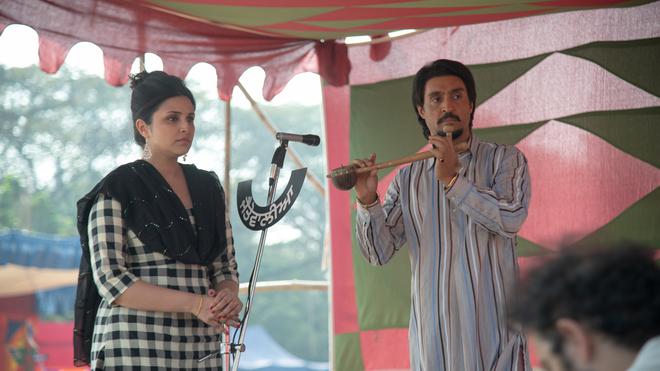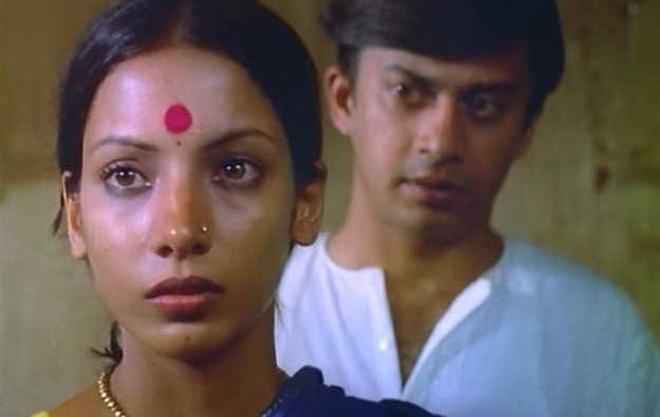Amidst the ongoing debate on whether maestro A.R. Rahman and ace director Imtiaz Ali have justified the earthy flavour and emotional flux of Amar Singh Chamkila’s music in the upcoming biopic of the phenomenal Punjabi singer, the discussion about the role of Chamkila’s ethnic identity in shaping his art has resurfaced.
A section on social media has questioned Diljit Dosanjh for removing the turban to play Chamkila, a Dalit Sikh. They remind the artist who normalised a turbaned hero in Hindi cinema for turning back on his statement where he promised not to lose his turban for a film role.
Those who believe in cinematic dharma, however, feel that the actor has done the right thing by keeping his look as close to the character as possible. The previous attempts to capture the artist’s journey, one of which featured Diljit in a turban (Jodi, 2023), were fictionalised accounts because the makers didn’t have the rights to film Chamkila’s biopic.
Actors adopting and removing the religious and social symbols of their characters are quite common in Hindi cinema. In the past, we have seen Aamir Khan sporting a vermillion tika and the sacred thread in Ketan Mehta’s Mangal Pandey: The Rising and Paresh Rawal performed namaz as a devout Muslim mechanic Hashmatullah in Amit Rai’s Road To Sangam. Way back in 1936, Devika Rani, the biggest star of the time, played an untouchable in Franz Osten’s Achhut Kanya. In Ali Abbas Zafar’s Jogi (2022), Diljit cuts his hair on-screen to depict the plight of Sikhs during the anti-Sikh riots in Delhi. Nobody objected. So, has it something to do with Diljit’s previous statement or is it about him playing a Ravidasia Sikh?
Like most absorbing narratives, Chamkila’s story allows for multiple endings. His assassination at the age of 27 along with his singer-wife Amarjot Kaur and his two associates evoked multiple conspiracy theories. Was he eliminated by the separatists who felt he was polluting the minds of the young generation with his obscene songs? Was he killed by his rivals, who felt threatened by his numero uno status in the Punjabi music industry? Or did he pay the price for marrying a Jatt Sikh girl who moved out of her first marriage to pursue her singing career?

In all three possibilities, the role of his caste identity, a Dalit’s control over resources, can’t be denied. Were his songs seen as the other’s reflection on the ways of a socially influential class, going through a process of purification in the 1980s? In all three possibilities, the role of his caste identity, a Dalit’s control over resources, can’t be denied. Were his songs seen as the other’s reflection on the ways of a socially influential class, going through a process of purification in the 1980s? Not even an FIR was registered in the case. Around the same time, two Leftist poets, Jaimal Singh Padda and Arvinder Singh Sandhu Pash, were also killed for speaking for the rights of workers at a time when religious extremism was on a high. A decade ago, Anurag Kashyap was actively considering making a film on Pash with Irrfan but it could not materialise.
Recently, a noted filmmaker from the region told this journalist that though Guru Gobind Singh asked his followers to submerge their caste identities into neutral surnames like Singh and Kaur, flaunting caste surnames is an everyday reality in Punjab. “We know there are still gurudwaras with two entrances and in many villages, there is a clear demarcation between upper caste and Dalit households,” he said.
The State has seen Dalit Sikhs in both top political as well as temporal positions but political observers have, over the years, brought out the socio-economic fallout of the Green Revolution where landless Dalit workers faced exploitation at the hands of Jatt Sikh land owners.
The Jatt-dominated Punjabi film industry has not been able to map this heterogeneity of Punjab’s society where almost 32% of the population come from Scheduled Caste groups. Like in Hindi cinema, Dalits have remained on the margins. In recent times, we have stray examples like Gurvinder Singh’s Anhey Ghorey Da Daan (Alms for a Blind Horse, 2011) that depicted the plight of the rural working class finding widespread critical acclaim. Another art house attempt was Kabir Singh Chowdhry’s mockumentary Mehsampur which also drew inspiration from Chamkila’s life. The short film Chamm (skin) tells the story of a Dalit worker in a slaughterhouse.

History tells us entertainment can take strange shapes in times of repression. Chamkila reflected on the poor farm workers but seldom talked of the matters of his caste in his songs. He commented on Jatt pride and Jatt Ki Dushmani (hostility of Jatt), perhaps to stay afloat in the mainstream. A multi-faceted artist who wrote, composed, and sang his songs, Chamkila offered a commentary through music on illicit relationships, alcohol, dowry, domestic violence, and drug abuse in a feudal society. These themes were present under the ribaldry of his popular lyrics. In his popular song ‘Lalkara’, the girl accepts the substance addiction of her lover, something that is not permitted by religion. In the suggestive ‘Mar Le Hor Try Jjia’, the sister-in-law of an aging man is pushing him to have a son with her when he says her sister is no longer fertile. Both songs capture the dark reality of the feudal society albeit in a harmless, playful manner.
Prof. Krantipal, who teaches Punjabi at the Department of Modern Indian Languages at the Aligarh Muslim University, says that Chamkila, through his songs, also hinted at how the landlord maintains social distance from the worker but likes to spend time with his wife. Shyam Benegal’s debut feature Ankur (1974) also explores the same theme in a different setting with a serious gaze. Later, this interplay of exploitation and surrender was exposed in Govind Nihalani’s Aakrosh (1980) and Gautam Ghose’s Paar (1984).

In Punjab, culture is often a by-product of agriculture. An akhada is used to describe a dedicated space for a wrestling bout as well as a musical performance in an open-air concert where Chamkila found his stardom. “Athleticism and aesthetics are conjoined in the region,” says Prof. Pal.
There must be something in the music of Chamkila, he says, that has kept his songs relevant even three decades after his death. “The sadagi (simplicity) and ravangi (coherent flow) in his earthy music and his audience connect are unmatched,” he says. With a tumbi in hand backed by a harmonium and dholak and accompanied by alghoza, chimta and flute, he would create magic with a basic sound system in his live shows, and his albums kept the truck driver going with the freshness of their lilt and lyrics.
Many songs of the folk artist present a strong picture of a woman in control of her desire. She taunts her lover as impotent if he is unable to cross the physical barriers to unite with her. Old-timers say Chamikla’s songs created the image of a goodly woman, someone like Mumtaz who was in great demand when Chamkila was sharpening his skills. His lyrics evoke a strong woman who not only performed household chores but also contributed to farming. His concerts had a butch vibe to them. Still, his double-meaning songs broke the patriarchal barriers. They reached the kitchens and living rooms through tape recorders and found a loyal fan base among women seeking to find a new idiom to the naughty folk songs they grew up singing at weddings and childbirth ceremonies.

Hoping that the buzz around the film spurs interest in the stories of Punjab and folk instruments, Prof. Pal says illicit relationships have been a common theme in Punjabi literature from medieval times and Chamkila only brought it out in the open. It reflects the social undercurrents of the border state where farmer, soldier, and driver have been principal occupations over centuries. When men are out for months, it provides opportunities and circumstances for both genders to indulge in making bonds that are considered forbidden.
“Many times it is the illicit relationship that is considered the real relationship because you share your deepest emotions with someone you truly bond with. In the epic Sohni Mahiwal story, Sohni is married to a man she despises and swims across the river to meet Mahiwal who has to disguise himself to meet her love. Illegitimate relations find space in Jnanpith awardee Gurdial Singh’s works; it is also there in Shiv Kumar Batalvi’s poetry.”
Chamkila’s imagery is not layered or polished. It is out there, which made him connect with the rural folk. They found in his songs their reflection. His symbolism is not shrouded in mystical allegory, but that doesn’t mean it is irrelevant. As Prof Pal says, Chamkila’s poetry may not be progressive in classical terms but it is not “lachchar” (base) either. Unfortunately, the current generation is trying to fit his glitter into one of the two boxes.







